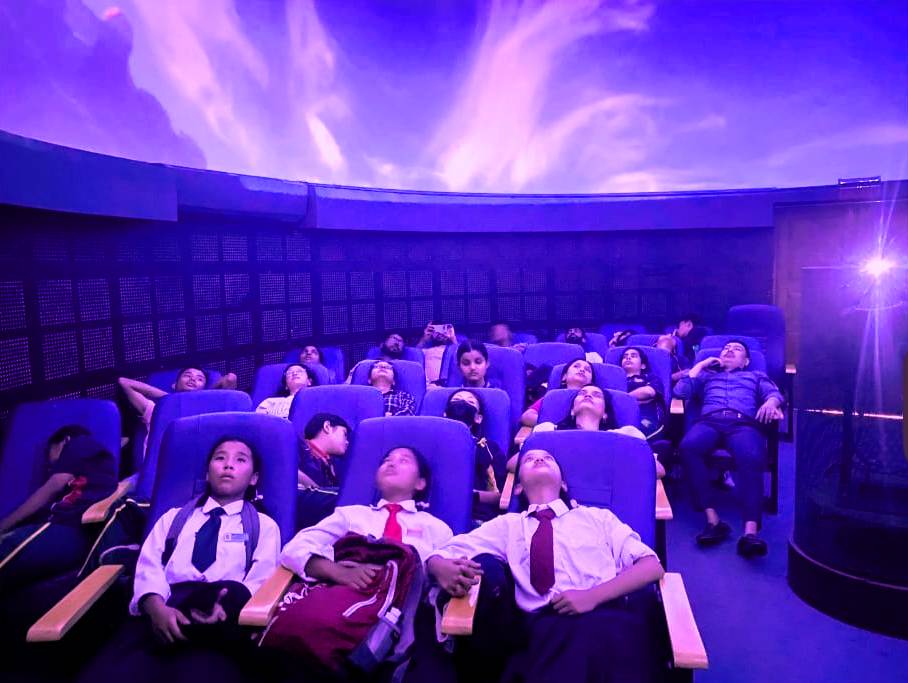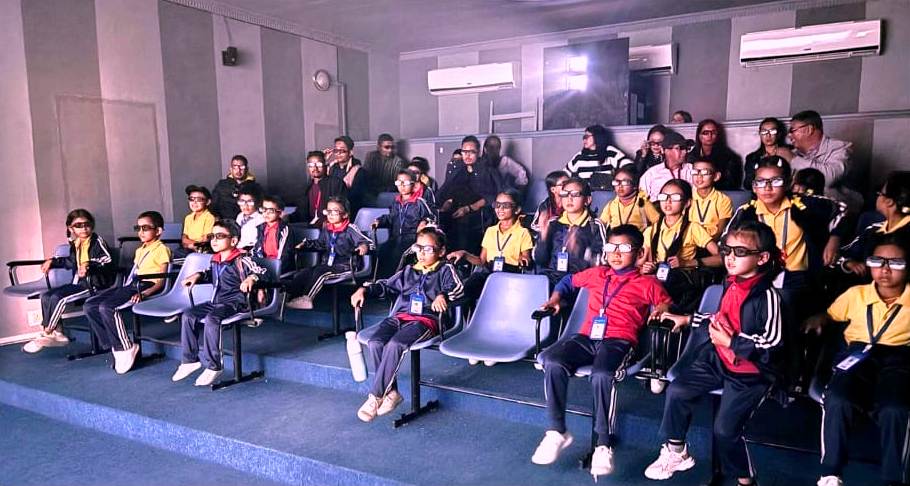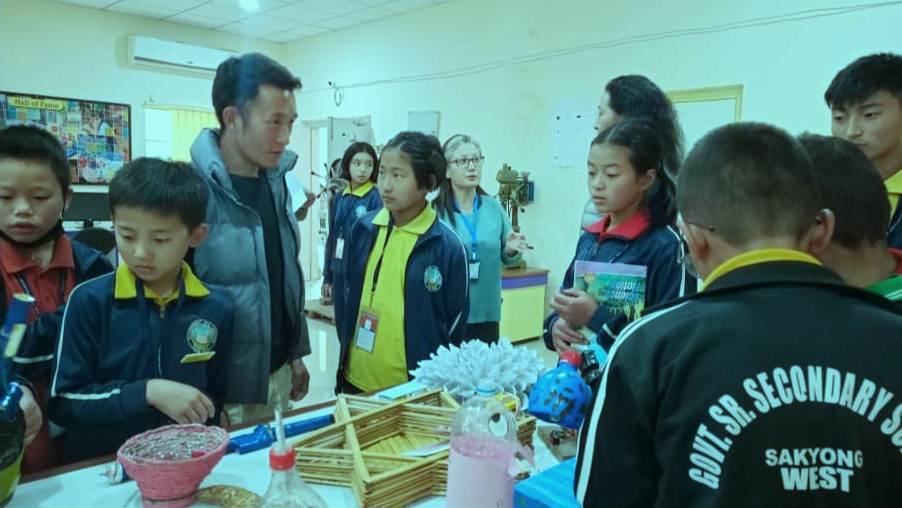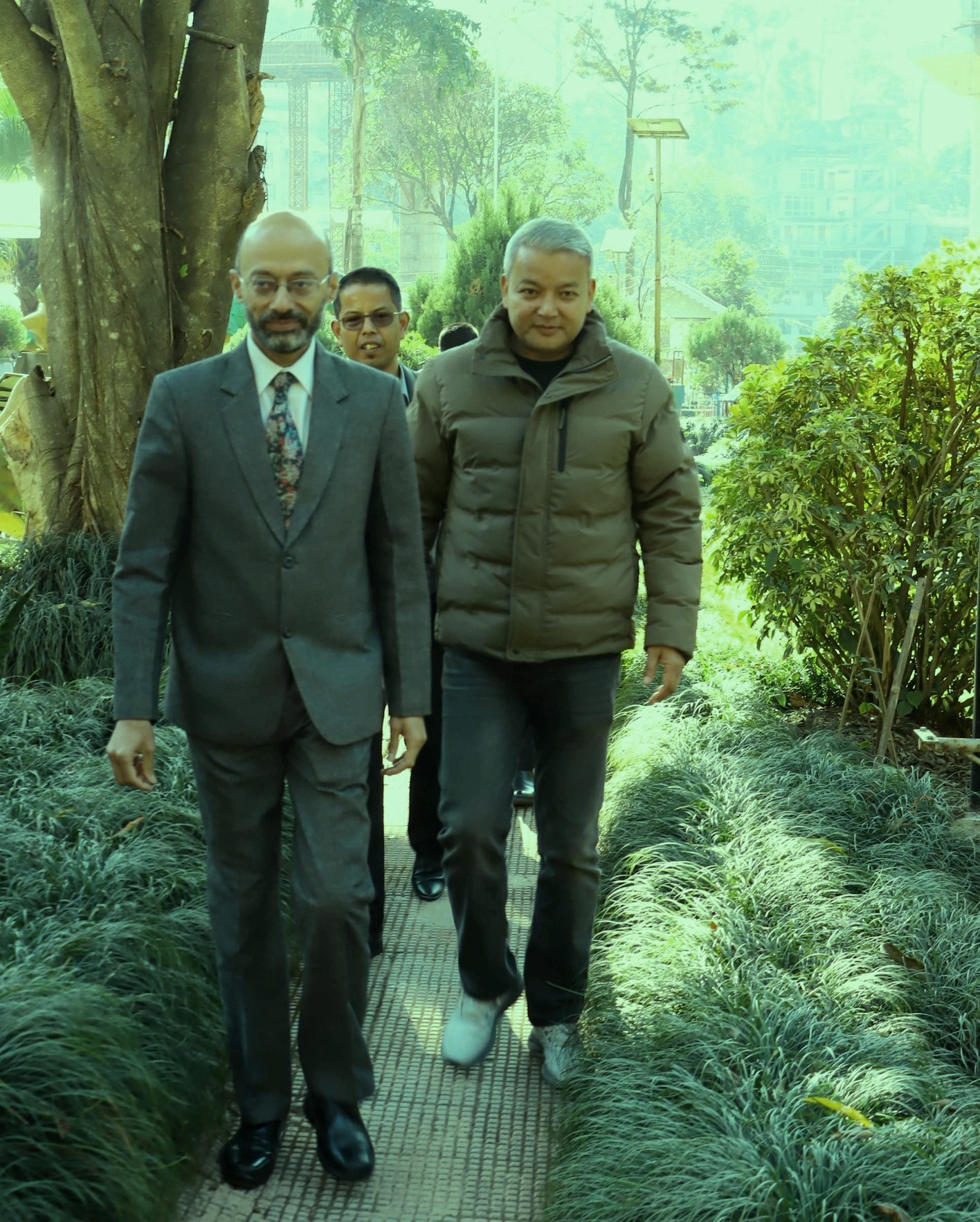OUR FOCUS AREA
Sikkim Science Centre
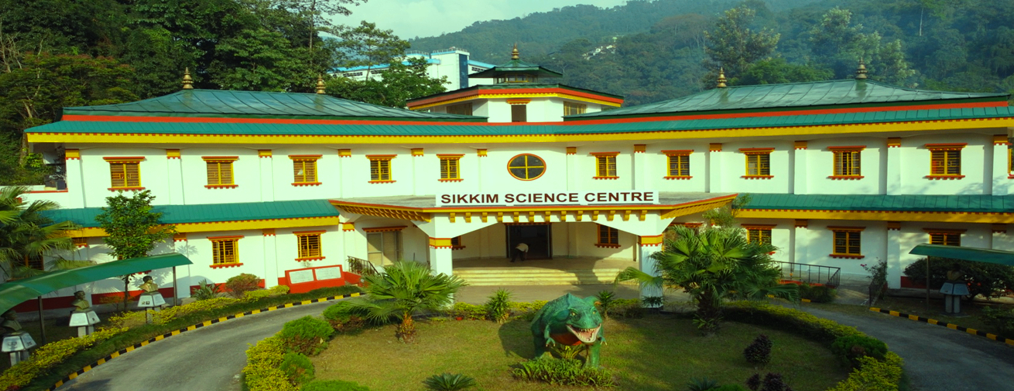
Introduction
1. About Sikkim Science Centre:
Sikkim Science Centre established at Namli Marchak about 10 km away from Gangtok has been engaged in dissemination of science to the people at large since 2008. The centre was inaugurated in two parts, with unique human kind gallery, fun science gallery, science part and auditorium hall being the first on 2008, followed by Digital Planetarium, 3D Theatre, State Innovation Hub and Library on July 1, 1997, by Hon’ble Chief Minister of Sikkim Shri Prem Singh Tamnag (Golay). This Centre is engaged in popularization and communication of Science & Technology in an enjoyable and non-formal way with primary objective of developing a scientific temper and promoting creative learning among general masses, particularly, the students, research scholars and innovators. Visitors explore to different kinds of facilities viz, Science Galleries (Unique Humankind Gallery, Fun Science Gallery), Children Activity Corner, Library, Biodiversity gallery, Science Park, State Innovation Hub, Digital Planetarium, 3D Theatre. Science Park of Sikkim Science Centre is equipped with different exhibits of unique fauna and different species of flora. The visitor gets facilities to get engaged with some recreational activities at Science Park. The unique humankind gallery is equipped with different exhibits on evolution of Huamn Beings. Fun Science Gallery is equipped with physics related exhibits where visitors can learn science with fun. The visitors are facilitated with shows of universe, marine life at 3D Theatre and Digital Planetarium. The State Innovation is a multi disciplinary laboratory where various innovation activities are undertaken by students, researcher and innovators with the support from Department of Science and Technology, Govt. of Sikkim. Moreover, research and development activities are also undertaken by the officials and staffs of state innovation hub. The Centre also organizes different nation and international occasion related to science and technology.
I. Unique Humankind Gallery:
The Unique Humankind Gallery consists of exhibits based on life science. Effective interpretation of all exhibits in this gallery requires extensive knowledge of life science. Therefore, manpower designated as education assistants with a background in Bioscience (graduation level) is essential to interpret all exhibits to the visitors.
| Sl. No. | Exhibit Name | Sl. No. | Exhibit Name | Sl. No. | Exhibit Name |
|---|---|---|---|---|---|
| 1 | Supreme Man | 2 | What Makes us Human | 3 | Evolution of Man |
| 4 | Unique Features | 5 | Our Nearest Relatives | 6 | Human Reproductions |
| 7 | Homunculus | 8 | Blue Eye or Brown Eyes | 9 | Boy or Girl |
| 10 | Birth Control | 11 | Skeletons and Bone Joints | 12 | Growth and Developments |
| 13 | Food and Healthy Living | 14 | Illusions | 15 | Visual Reaction Time |
| 16 | Hearing Reaction Time | 17 | Tactile Reaction Time | 18 | Check Your Reflex |
| 19 | I.Q and Puzzles | 20 | Blood and Bond of Life | 21 | Human Memory |
| 22 | Muscles make Movement | 23 | Muscular System | 24 | Human Postures |
| 25 | Human Expressions and Feelings | 26 | Man is Social | 27 | Makeshift Mammals |
| 28 | Man is one | 29 | Will man Survive? | 30 | Quiz |
| 31 | Modern Man | 32 | Neanderthal Man | 33 | Homo Erectus |
| 34 | Homo Habilis | 35 | Australopithecus | 36 | DNA The Code Of Life |
| 37 | Sensation of Test | 38 | Sensation of Smell | 39 | Sensation of Hearing |
| 40 | Sensation of Vision | 41 | Brain the Master Controller | 42 | Sensation of Touch |
II. Fun Science:
Fun Science Galleries consist of exhibits that are based on the principles physics. Effective interpretations of these exhibits to the visitors require extensive knowledge of mechanics such as energy, force, pressure, Momentum etc, Electricity and Magnetism, Fluid Mechanics, Optics and basic knowledge of Geometrical Mathematics. Therefore, an education assistant having pure science background in graduation is required for these galleries to interpret all these exhibits to the visitors to their satisfaction..
| Sl. No. | Exhibit Name | Sl. No. | Exhibit Name | Sl. No. | Exhibit Name |
|---|---|---|---|---|---|
| 1 | Movie Magic | 2 | 2-D to 3-D | 3 | Anamorphoses |
| 4 | Leave Your Shadow Behind | 5 | Color Shadow | 6 | Is Light Visible? |
| 7 | Infinity Well | 8 | Kaleidoscope | 9 | Illusive Sphere |
| 10 | Illusion with Ring | 11 | Fun Mirrors | 12 | Chaotic Magnets |
| 13 | Chaotic Ball | 14 | Chaos | 15 | Moiré Patterns |
| 16 | Organ Pipes | 17 | Transfer Of Momentum | 18 | Moiré Patterns - II |
| 19 | The Impossible Mixtures | 20 | Liquid Painting | 21 | Rising Bubbles |
| 22 | Shapes Matters | 23 | Identify a Magnet | 24 | Curie Point |
| 25 | Move your hand in the Magnetic Field | 26 | Floating Disc | 27 | Jumping Disc |
| 28 | Rising Arc | 29 | The Grand Shuttle | 30 | Rotating Egg |
| 31 | The Express Route | 32 | All Roads Lead to Rome | 33 | Elliptical Carom Board |
| 34 | The Lazy Channel | 35 | Planetary Motion | 36 | Sympathetic Swing |
| 37 | Acrobatic Stick | 38 | Vortex | 39 | Double Cone Runs Uphill |
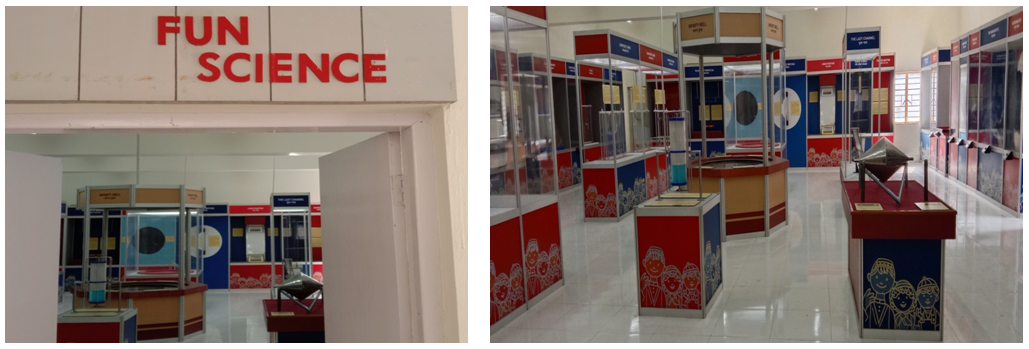
III. Children Activity Corner:
This is a classroom like hall where small children can sit and play with different shapes of objects in mathematics in presence of education assistant having basic knowledge of mathematics. Different books for small children and Drawing and Writing Materials are kept here for the children to enjoy among them.
IV. Gallery on Biodiversity of Sikkim:
Gallery on Biodiversity of Sikkim which explore the flora and fauna of Sikkim Himalayas. The gallery covers the biodiversity (flora and fauna), biosphere (Forest Zone) and the culture, custom, tradition of the ethnic communities of Sikkim which have been presented through dioramic presentations supported by light show with bilingual commentary. Here the students can sit and study, interact with the interpreter along with their escort teachers. Therefore, an Education Assistant with knowledge in biology and Environmental science is required.

V. State Innovation Hub:
An Innovation Hub is place which provides facilities to nurture new ideas and help develop inquisitive perspective in youths of today. The Innovation hubs created by National Council of Science Museums engage youth in innovative and creative activities. These hubs serve as springboards for new ideas and innovation and thus helping the society and economy to face future challenges and meet rising aspirations of the growing population. Specifically, embedding such creative pedagogies in science education through Innovation „Hubs‟ would have potential to retain talent in modern science.
Facilities at the Innovation Hub
The Innovation Hub is a place where creativity meets science. Various spaces within the hub are designed to encourage exploration, experimentation, learning by doing, and innovation. The following are the key facilities provided:
| Sl. No. | Facility | Description |
|---|---|---|
| 1 | Discovery Hall | This area will have 10 to 15 interactive science exhibits/experiments to create excitement about science through exploration and discovery of underlying principles. This will help promote logical thinking. |
| 2 | Innovation Resource Centre and Hall of Fame | This space will be used to showcase innovative ideas/products/implements that have transformed our world or made significant impacts, along with stories or inspirations of inventors and innovators. It will also display implements of appropriate technology, traditional knowledge, art, and craft relevant to public life in the respective regions. |
| 3 | Idea Lab | This lab will have basic facilities to pursue creative and innovative hobbies like model making, basic science experiments, gadget fabrication, teaching/learning aids, and testing of soil, water, or food samples. |
| 4 | Thod Phod Jod (Break & Remake) Corner | Students learn to work with their hands by dismantling, reassembling, and remaking devices and gadgets to understand their workings practically. |
| 5 | Kabad Se Jugad (Build from Scraps) | Encourages students to learn through hands-on practice by creating models and devices using scrap materials available in daily life. |
| 6 | Idea Box | Students can contribute their own innovative ideas to an idea bank. The most promising ideas are selected for further experimentation, model making, or project development. |
| 7 | Design Studio | This area provides a creative space where students can design various products, objects, and models, encouraging creativity and design thinking. |
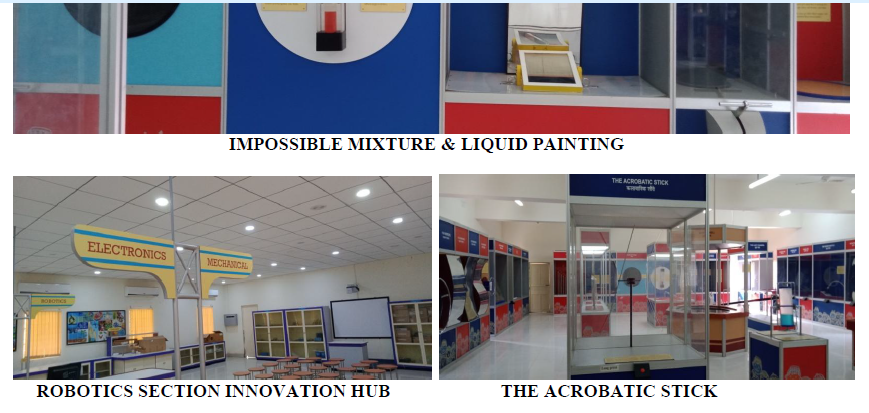
VI. 3-D THEATRE:
A 3D/three-dimensional film is a motion picture that enhances the illusion of depth perception. 3D films have existed in some form since the 1950s, but had been largely relegated to a niche in the motion picture industry because of the costly hardware and processes required to produce and display a 3D film. The lack of a standardized format for all segments of the entertainment business also slowed down proliferation of 3D video or cinema. 3D films became more and more successful throughout the 2000s, culminating in the unprecedented success of 3D presentations of Avatar in 2009-2010. The 3-D theater offers the 3-D experience of watching films, particularly on science-based topics for children. Students will be given polarized 3D glasses those coming to watch the show in the theatre. Through this theatre certain scientific principles can be explained to the students in an easy and enthusiastic manner
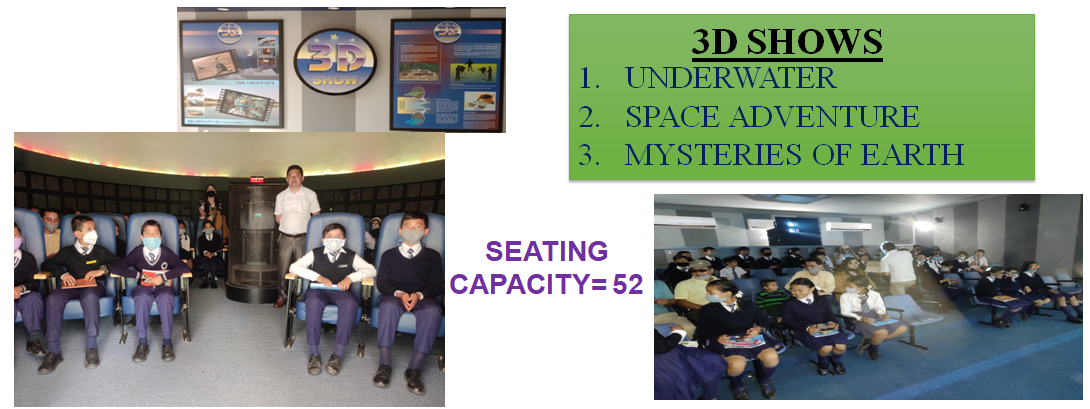
Facilities at the 3D Theatre
In Science Centre Marchak, East Sikkim short length scientific documentaries produce an immersive experience for the visitors and this element of surprise helps communicate science in a better way. Many modern science centres are now equipped with the 3D theatre facility. It creates immense curiosity among the visitors and simultaneously generates revenue.
VII. PLANETARIUM:
A dome, several star projectors, control console, sound system and sky watching facility comprise the complete set of a Planetarium. The sharp image of stars, planets etc. are projected on the inner hemispherical surface. Control console and sound system are the associated section of the whole activity. The seating arrangement installed for audience below the hemispherical dome. It is concentric. Finally the sky watching facility and astronomy gallery make people to experience and learn about astronomical objects and events. Astronomy is an age old and fascinating science. From the ancient time people tried to comprehend the logic behind astronomical phenomena without any tools. How we use the astronomical events and cycles in our daily life, what we should do and should not to be done, the astonishing big sky engulfs our whole existence all the day and night with millions of stars and planets and the pattern of their trajectory cannot be understood without the help of Planetarium demonstration. The prime target audience is school students.
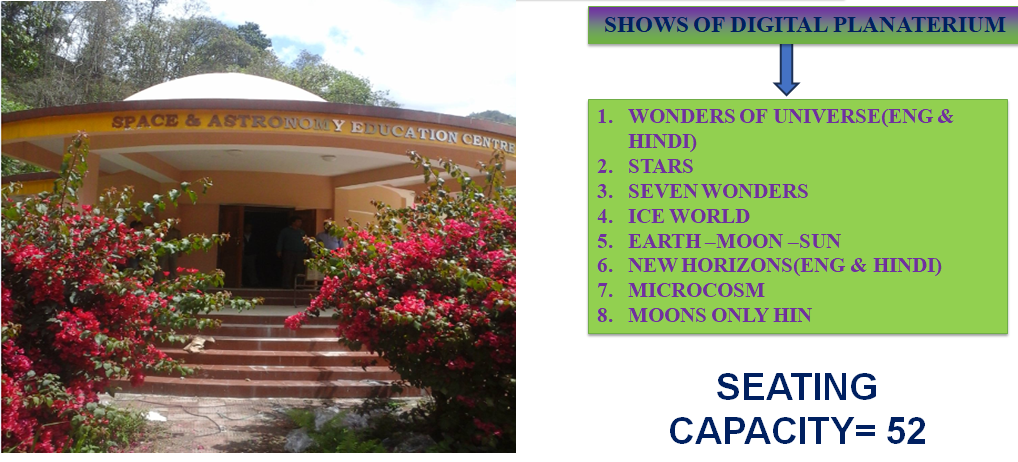
Facilities at the Planetarium:
We have 8m, dome diameter Planetarium with seating arrangements, astronomy gallery, sky watching facility and other infrastructural facilities.
We Value Your Opinion — Scan and Send Us Your Feedback
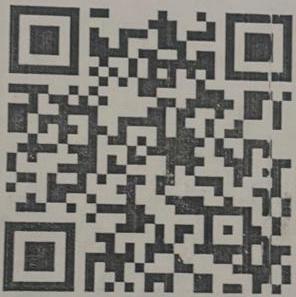
Photographs
